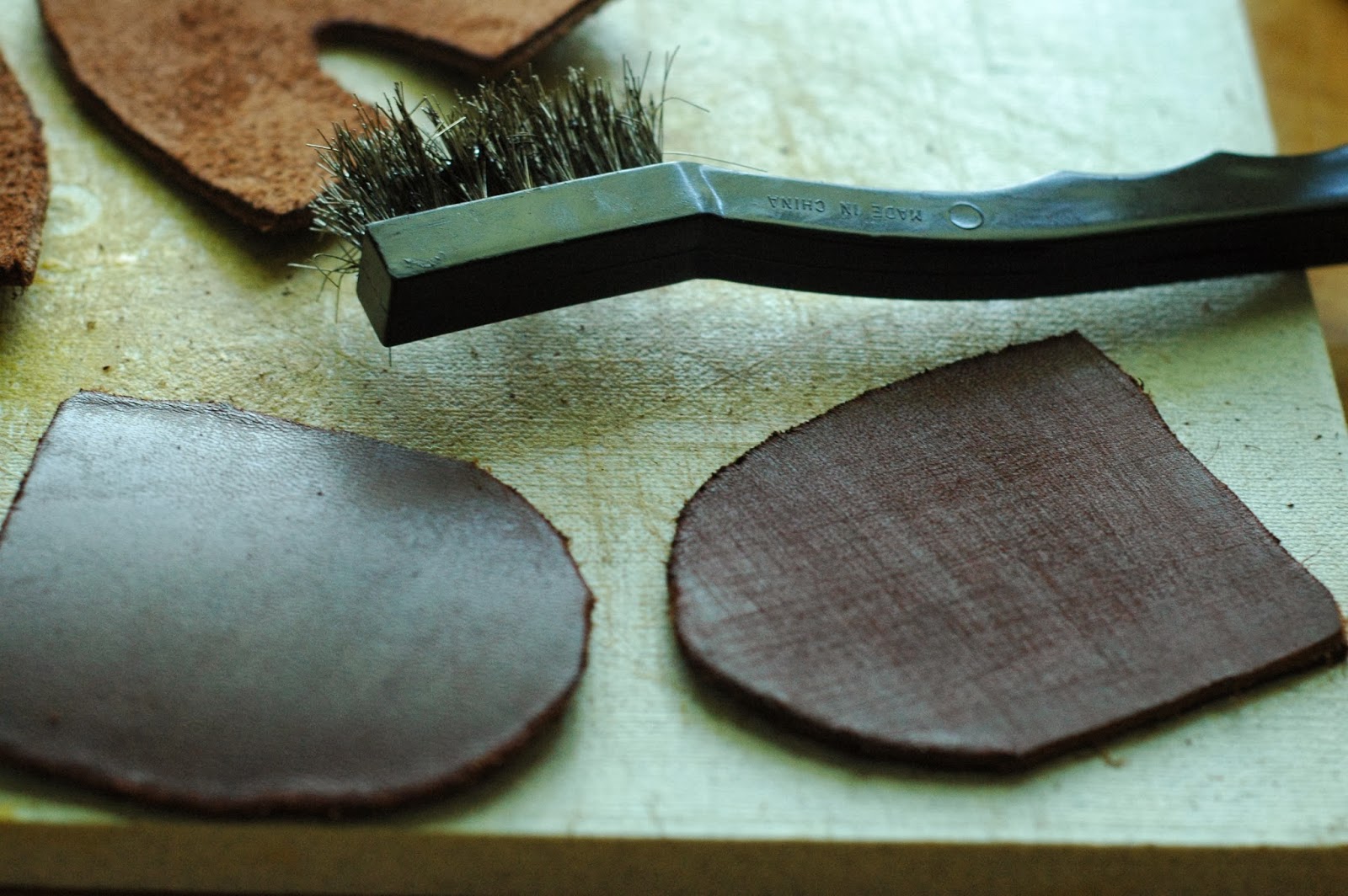
The first thing I did after making the uppers was to ruin them. As I was ironing the finished upper, it belched out hot water and caused the dye in the interlining to bleed all into the white silk. I had to almost start over again.
Once I got over that, I attached the sole as I would to any turnshoe, it was time to stack the heels. I cut out 6 layers per heel. The top two layers are hollowed out in the middle to make a cup for the ball of the foot.
I hammered them to harden the leather.
Then I scratched them with a wire brush to make the glue adhere better.
After they were glued, I carved down the sides. I got them fairly nice and smooth, burnished the edges, and then realized they were totally the wrong shape. These are for a lady's dancing shoe, not for a men's boot.
So I cut them down again. Then I burnished the edges with soap and wax. They are nowhere near as smooth as I would like, but I have many ideas of how to do it better next time.
They were attached using tiny, tiny nails and more glue.
The next step is to harden the arch with a hammered leather shank and add cork cushioning under the ball of the foot. I'm not sure I left enough room in the shoe for for this added thickness, so they might not fit by the time I finish. The silk and the slipper shape is extremely unforgiving in terms of fit. It is so much easier to make the boot shape or to work with wool. But that's why I made this experimental pair -- to find things out.






